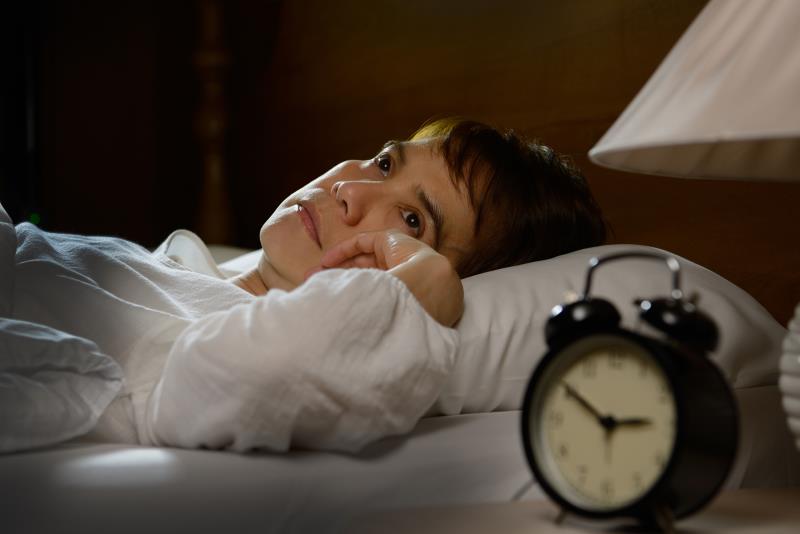
Dr Poon Shi Hui, a consultant at the Department of Psychiatry at Singapore General Hospital, speaks to Roshini Claire Anthony on the different types of insomnia and the various management strategies deployed for each type.
A population survey conducted in Singapore in 2002 among 430 individuals aged 18–64 years showed that almost half the population (n=200) reported sleeping difficulties. [Singapore Med J 2015;56:317-323] An international survey of 10,132 individuals from Japan, France, Germany, Italy, Spain, UK, and US found that the rate of sleeping problems was 56 percent in the US, 31 percent in Western Europe, and 23 percent in Japan. [Curr Med Res Opin 2008;24:307-317]
Causes and risk factors
There are multiple causes or risk factors for insomnia. Common ones include psychiatric disorders (eg, depression, anxiety, substance use disorder, or post-traumatic stress disorder) and other sleep disorders (eg, sleep apnoea, restless leg syndrome).
Poor sleep hygiene, certain medications or stimulants (eg, caffeine, methylphenidate, theophylline, antidepressants, beta blockers, glucocorticoids), and stress can also lead to insomnia, as can medical problems such as pulmonary disease (eg, difficulty breathing, pooling of secretions), cancer, and chronic pain.
Intrinsic factors and genetics can also play a role, with a higher risk among females, especially during the peri- and postmenopausal periods, those of older age, individuals with a personal or family history of insomnia, and those with a predisposition toward being more aroused from sleep.
Diagnosing insomnia
Insomnia is diagnosed through a clinical evaluation which comprises a detailed history taking of medical, psychiatric, and sleep history, and accounting for predisposing and precipitating factors that may be relevant when insomnia began such as social, medical, or psychiatric events, and stress.
This is important as insomnia due to pain, shortness of breath, or other medical conditions is unlikely to improve without maximal treatment of the underlying medical disorder. This is also the case for sleep disorders other than insomnia (eg, obstructive sleep apnoea, restless leg syndrome) which may present with insomnia but are unlikely to improve without treatment of the specific sleep disorder.
Perpetuating factors such as behavioural or cognitive responses to sleeplessness that may be maladaptive (eg, poor sleep habits, unrealistic expectations of sleep) need to be identified, as do circadian rhythm disruptions that potentially complicate the clinical picture.
Overnight polysomnography (PSG) is a standard tool used to evaluate sleep-related pathophysiology. It is the most objective diagnostic measure but is not routinely used.
It is important that GPs differentiate between acute and chronic insomnia. Acute insomnia is the more common of the two. It lasts less than 1 month and usually has an immediate precipitant such as a recent psychological or physiological stressor. Individuals with chronic insomnia have episodes at least 3 times a week, with the condition recurring for ≥3 months.
It is also challenging differentiating between primary insomnia, which has no underlying cause, and secondary insomnia which has an underlying cause.
Treating insomnia
If the patient has secondary insomnia, the cause of insomnia would be treated as the primary condition.
For primary insomnia, treatment measures differ according to whether the insomnia is acute or chronic.
For acute insomnia, discussion of the role of stressors can provide control or acceptance of sleeplessness. If the condition is severe or is due to substantial stress, short-term use of sedative medications may be helpful. This includes short- or intermediate-acting benzodiazepines for 2–4 weeks to address daytime sleepiness and to control anxiety about sleep. The goal of this treatment measure is to minimize additional psychological and physical stress that is produced by insomnia. It also reduces the development of dysfunctional cognitive and behavioural responses to sleeplessness which could predispose to chronic insomnia. These medications are effective and well tolerated for short-term use. A follow-up assessment after 2–4 weeks will help the GP re-evaluate the patient’s condition and decide whether to refer the patient for cognitive behavioural therapy for insomnia (CBT-I).
For chronic insomnia, CBT-I and medications are the mainstay of treatment. However, CBT-I in the first-line setting* may not be effective or accessible to all patients, while some patients may prefer long-term use of medications which is also an acceptable measure. If rapid response is needed for clinical reasons (eg, deterioration in daytime function or excessive anxiety regarding sleeplessness), which may affect the patient’s ability to follow sleep restrictions and CBT-I, medications can be tapered over time.
Short-term trials have shown that CBT-I alone and CBT-I with medications demonstrate relatively equivalent outcomes, and both strategies are superior to medications alone, which was also the case in longer term studies lasting between 12 and 24 months. CBT-I without medication has the advantage of not exposing patients to side effects and potential drug interactions. However, there is no predictor of treatment response to CBT-I or medications. If a patient does not respond to treatment, the physician needs to take a thorough history, perform PSG if clinically indicated, and revisit the diagnosis.
Psychiatric disorders and insomnia have a bidirectional relationship, and concomitant treatment is vital to hasten recovery and to induce a sustained response.
A major challenge to treatment is that patients often desire a ‘quick fix’ or in some cases, develop a psychological and physiological dependence on certain medications.
Conclusion
Insomnia is a very common disorder and can be the presenting symptom for various conditions. It is important to take a thorough history and to revisit diagnosis if treatment options don’t work. GPs should educate patients on sleep hygiene as a preventive measure. They should also ensure that other causes of insomnia are ruled out, assess the patient’s medications to avoid worsening of their insomnia, reinforce sleep hygiene, start first-line treatment, and refer the patient to a specialist if necessary.
